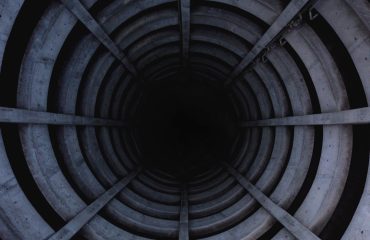Prefabricated buildings are rapidly gaining popularity as a sustainable and efficient construction method. Among the various materials used in prefab construction, steel stands out as a particularly ideal choice, offering a compelling combination of strength, durability, sustainability, and cost-effectiveness. This blog post will delve into the reasons why steel is the perfect material for creating modern, efficient, and resilient prefabricated structures.
Unmatched Strength and Durability
Steel’s exceptional strength-to-weight ratio is a game-changer in prefabricated construction. It allows for the creation of lightweight yet incredibly strong structures, capable of withstanding significant loads and resisting harsh weather conditions. This inherent strength translates to:
- Increased lifespan: Steel structures are remarkably resistant to decay, rot, and insect infestation, ensuring a longer lifespan compared to traditional materials like wood or concrete.
- Enhanced safety: The robust nature of steel provides superior protection against natural disasters such as earthquakes and high winds.
- Greater load-bearing capacity: Steel frames can support heavier loads, allowing for more flexible design options and the possibility of incorporating multiple stories.
Sustainability and Environmental Benefits
While often perceived as an environmentally unfriendly material, steel’s sustainability credentials are surprisingly strong in the context of prefabricated buildings. Here’s why:
- Recyclability: Steel is 100% recyclable and can be reused countless times without losing its structural integrity. This significantly reduces the environmental impact compared to materials with limited recyclability.
- Reduced waste: The precision of prefabrication minimizes material waste on-site, further enhancing the environmental benefits.
- Lower carbon footprint (in some cases): While steel production has an associated carbon footprint, the overall lifecycle assessment of steel buildings, especially when considering recycling and reduced construction waste, can be comparable to or even better than other materials in certain applications.
- Energy efficiency: Steel’s thermal properties can be enhanced through insulation techniques, leading to energy-efficient buildings with reduced heating and cooling costs.
Cost-Effectiveness and Time Savings
Prefabricated steel buildings often translate to significant cost savings and faster project completion times. This is due to several factors:
- Faster construction: The off-site fabrication process accelerates the overall construction timeline, reducing labor costs and project delays.
- Reduced labor costs: Less on-site labor is required, leading to lower labor costs.
- Precise fabrication: Factory-controlled precision minimizes errors and rework, saving time and resources.
- Simplified logistics: Pre-fabricated components are easily transported and assembled on-site, streamlining the logistics process.
Design Flexibility and Versatility
Contrary to popular belief, steel offers remarkable design flexibility. Steel frames can be easily adapted to various architectural styles and building designs. This versatility allows for:
- Complex shapes and forms: Steel’s malleability allows for the creation of intricate architectural designs that would be difficult or impossible to achieve with other materials.
- Large spans and open spaces: Steel’s strength enables the creation of wide open spaces without the need for numerous supporting columns.
- Adaptability to different climates: Steel structures can be designed to withstand various climatic conditions, from extreme heat to heavy snowfall.
Applications of Steel in Prefabricated Buildings
The versatility of steel makes it suitable for a wide range of prefabricated building applications, including:
- Residential buildings: From single-family homes to multi-unit dwellings, steel provides a strong and durable foundation.
- Commercial buildings: Offices, retail spaces, and warehouses can benefit from steel’s strength and cost-effectiveness.
- Industrial buildings: Factories, workshops, and storage facilities often utilize steel for its robustness and ability to withstand heavy machinery.
- Educational buildings: Schools and universities can leverage steel’s durability and adaptability to create safe and functional learning environments.
- Healthcare facilities: Steel’s hygiene and ease of cleaning make it suitable for certain healthcare applications.
Addressing Potential Concerns
While steel offers numerous advantages, it’s essential to address potential concerns:
- Corrosion: Steel is susceptible to corrosion, but this can be effectively mitigated through protective coatings such as galvanization or paint.
- Thermal bridging: Steel can conduct heat, potentially leading to thermal bridging. However, this can be addressed through proper insulation techniques.
- Initial cost: While steel structures are often cost-effective in the long run, the initial investment may be higher than some traditional materials. However, this is often offset by faster construction times and reduced labor costs.
Conclusion
In conclusion, steel’s exceptional strength, durability, sustainability, and cost-effectiveness make it an ideal material for prefabricated buildings. Its versatility allows for a wide range of design possibilities, while its inherent properties contribute to safer, more resilient, and environmentally responsible structures. By carefully considering the potential concerns and implementing appropriate mitigation strategies, the benefits of using steel in prefabricated construction far outweigh the challenges, making it a compelling choice for modern building projects.
“`




